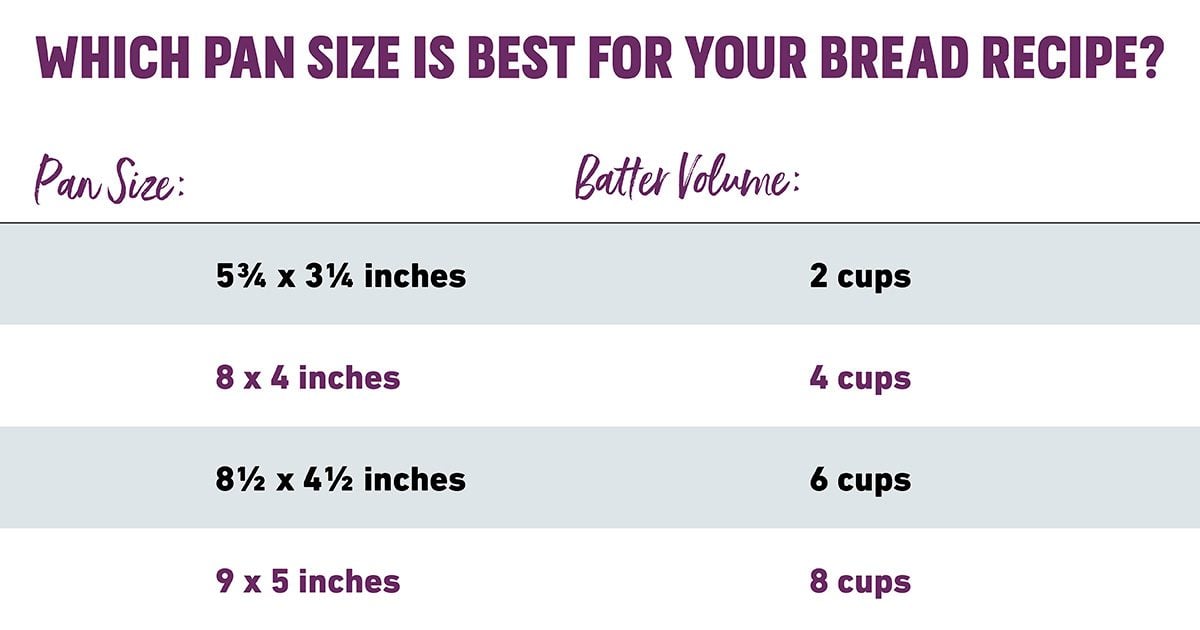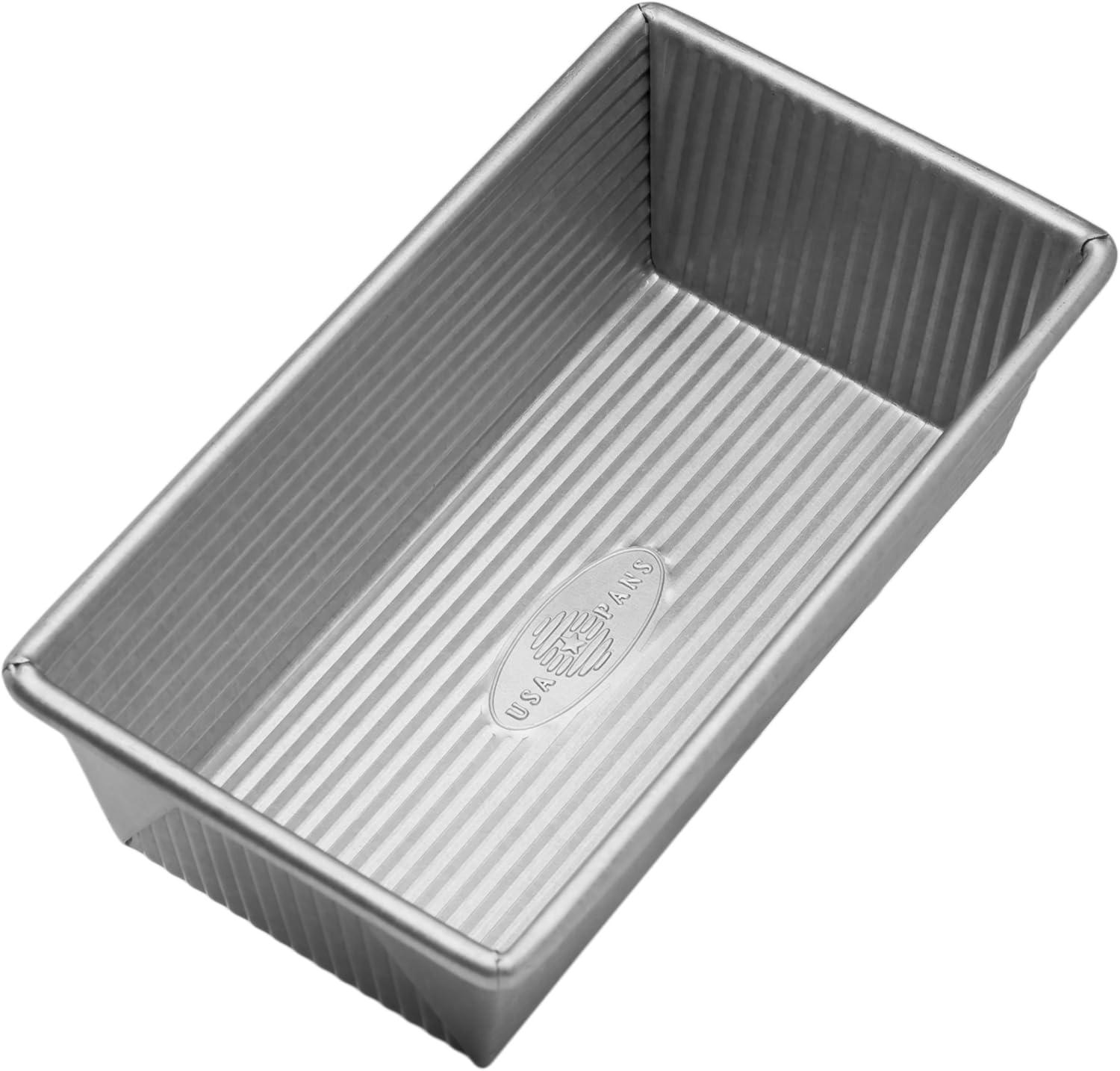Standard Bread Pan Size. Have you ever baked a loaf of bread, only to find it doesn’t quite fit in your pan? It’s a common baking dilemma that can leave you with uneven, oddly shaped slices.
Understanding the standard bread pan size is more than just a detail—it’s a game-changer for your homemade bread. Imagine pulling out a perfectly baked, golden loaf that slides effortlessly from the pan. That’s what the right-sized pan can do for your baking confidence.
This article will uncover the mysteries of bread pan sizes and help you choose the perfect one for your kitchen. Stick around, and you’ll discover the key to baking success that every home baker needs to know.

Choosing The Right Bread Pan
Choosing the right bread pan is crucial for perfect homemade bread. The pan size affects the shape, texture, and baking time of your loaf. Ensuring you have the correct pan helps in achieving consistent results. Understanding the standard sizes can make your baking experience enjoyable and successful.
Understanding Standard Bread Pan Sizes
Standard bread pans come in various sizes, typically ranging from 8 to 9 inches in length. The most common size is 9×5 inches. This size is ideal for most recipes. It accommodates a standard loaf without overflow. Smaller pans yield taller loaves, while larger pans produce flatter ones. Knowing your recipe’s needs can guide your choice.
Material Matters
Bread pans are available in different materials like aluminum, glass, and ceramic. Each material has its pros and cons. Aluminum pans heat quickly and evenly, making them a popular choice. Glass pans allow you to monitor browning, but they may require longer baking times. Ceramic pans provide even heat distribution, though they can be heavier.
Non-stick Vs. Traditional
Non-stick pans offer easy release, reducing cleanup time. Traditional pans may require greasing or lining with parchment. The choice depends on your preference and ease of use. Non-stick options may affect crust development due to reduced surface resistance.
Pan Depth And Shape
Depth impacts how your bread rises and bakes. Deeper pans result in taller loaves. Shallower pans can produce wider, shorter bread. The shape can also influence the final appearance. Select a pan that complements your recipe’s desired outcome.
Considerations For Specialty Bread
Specialty breads like brioche or challah may require specific pans. These breads often need pans with unique shapes or sizes. Specialty pans can enhance the loaf’s presentation and texture. Consider recipe requirements when selecting your pan.

Impact On Baking Results
Standard bread pan size affects baking results by ensuring even heat distribution, leading to consistent texture and shape. Using the right pan size helps achieve the perfect crust and soft interior, enhancing the overall quality of your bread.
The size of your bread pan can significantly affect your baking results. Choosing the right size can mean the difference between a perfectly baked loaf and one that’s undercooked or overflowing. Let’s dive into how the size of a standard bread pan can impact your baking outcomes.
Understanding Standard Bread Pan Sizes
Standard bread pans typically measure around 9×5 inches. However, variations like 8.5×4.5 inches also exist. Each size can influence the texture and appearance of your bread.
Why Size Matters In Bread Baking
A larger pan can lead to a flatter loaf. This happens because the dough spreads out more. Conversely, a smaller pan encourages upward rise, resulting in a taller loaf.
Impact On Baking Time
Different pan sizes can alter baking times. A smaller pan generally requires more time for the heat to penetrate the dough. If you use a larger pan, you might need to shorten the baking time to avoid a dry crust.
Texture And Crust Considerations
The pan size affects the texture of your bread. A smaller pan often yields a denser crumb with a thicker crust. Larger pans can produce a lighter crumb with a softer crust.
What Happens When You Choose The Wrong Size?
Using the wrong pan size can lead to disappointing results. A too-small pan can cause overflow, while a too-large one might result in a collapsed loaf. Have you ever experienced the frustration of a bread loaf that just won’t rise? It might be your pan size to blame.
Tips For Adjusting Recipes
When adjusting recipes for different pan sizes, consider the capacity of the pan. You might need to increase or decrease the dough quantity to match the pan’s volume. Keep an eye on your bread during baking to ensure it cooks evenly.
Personal Experience With Pan Sizes
I once used a smaller pan than recommended. The loaf rose beautifully, but the crust was thicker than expected. It taught me to always consider pan size when preparing my favorite recipes.
Conclusion: The Perfect Pan For The Perfect Loaf
Choosing the right bread pan size can transform your baking. Consider the loaf you want and select your pan accordingly. Next time you bake, ask yourself: is this the right pan for the job?
Tips For Perfect Loaves
Baking the perfect loaf requires more than just following a recipe. The size of your bread pan plays a crucial role in achieving optimal results. Using the right pan ensures even cooking and a desirable texture. Below, explore essential tips for creating flawless loaves with standard bread pans.
Understanding Bread Pan Sizes
Standard bread pans typically measure 9 x 5 inches. This size allows for even heat distribution. It’s ideal for most recipes, providing a balanced loaf height and width. Using the correct size prevents overflowing or undercooked bread.
Adjusting Baking Time
Pan size affects baking time significantly. A smaller pan may require less time, while a larger one needs more. Keep an eye on the crust color. A golden-brown hue usually indicates readiness.
Filling The Pan Correctly
Fill the pan two-thirds full for best results. This gives the dough room to rise without spilling over. Avoid overfilling, which leads to uneven baking and a messy oven.
Monitoring Dough Rise
Place your dough in a warm area to rise properly. Rising too fast can affect texture. Slow and steady rise results in a softer, airy loaf.
Using Proper Ingredients
Quality ingredients are key to a perfect loaf. Fresh yeast and flour ensure good texture and flavor. Avoid expired products for optimal results.
:max_bytes(150000):strip_icc()/__opt__aboutcom__coeus__resources__content_migration__simply_recipes__uploads__2019__06__Guide-to-Loaf-Pans-LEAD-06-2bb2f844b6cc4ba9aee3f9ba1b1ac638.jpg)
Frequently Asked Questions
What Size Pan Do You Need For Bread?
Use a standard 9×5-inch loaf pan for most bread recipes. This size ensures even baking and optimal rise. Some recipes may require different sizes, but 9×5 inches is commonly recommended. Always check your recipe for specific pan size instructions to achieve the best results.
What Is The Difference Between A Loaf Pan And A Bread Pan?
A loaf pan and a bread pan are often used interchangeably. Both refer to the same kitchen tool. They are rectangular pans used for baking bread and other loaf-shaped dishes. The terms are synonymous, with no significant difference in functionality or design.
What Is The Difference Between 8×4 And 9×5 Loaf Pans?
The 8×4 loaf pan is smaller, holding about 4 cups of batter. The 9×5 pan is larger, accommodating roughly 8 cups. This size difference affects baking time and loaf height. Choose the size based on your recipe requirements for best results.
What Is The Size Of A Standard Loaf Of Bread?
A standard loaf of bread typically weighs around 1 pound or 16 ounces. Its dimensions are generally about 9 inches long, 5 inches wide, and 4 inches tall. These measurements can vary slightly depending on the brand and type. Always check packaging for exact details.
Conclusion
Choosing the right bread pan size is essential for baking success. It affects your bread’s shape and texture. Standard sizes fit most recipes. A 9×5 inch pan is common. Perfect for loaves, banana bread, or quick breads. Always check your recipe for size recommendations.
This ensures your bread bakes evenly. Remember, too small a pan can overflow. Too large may cause flat loaves. Experimenting with different sizes can be fun. Find what works best for your kitchen. Happy baking!

